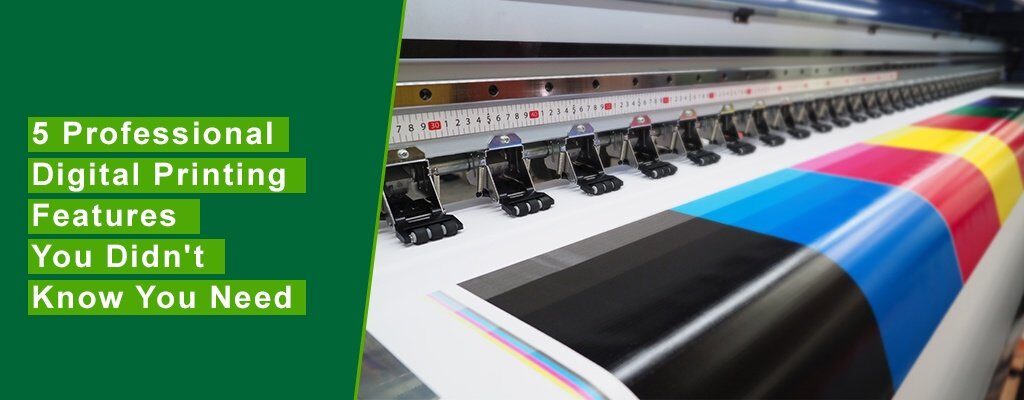Learn the foundations of product creation with print on demand platforms.
Learn the foundations of product creation with print on demand platforms.
Blog Article
Recognizing Just How Digital Printing Changes the Printing Industry
The printing sector, long soaked in conventional methods, is going through an extreme transformation with the introduction of electronic printing. This innovative innovation, which avoids the requirement for printing plates, enables fast production and customization, reshaping the landscape of print communication. With its possible to stimulate involvement via customized web content and to supply sustainable solutions, it's clear that digital printing is even more than a technical advancement; it's a critical video game changer. How precisely does it change the industry? Allow's explore.
The Development of Digital Printing: A Brief Review
Since its creation, digital printing has actually undergone substantial changes, continually transforming the printing industry. Its advancement began with the growth of xerography in the mid-20th century, a procedure which laid the groundwork for laser printers. With the arrival of the 90s, electronic printing innovation began to grow, and the sector experienced the introduction of straight imaging presses, which got rid of the need for publishing plates. As the new millennium unfolded, developments in modern technology better stimulated the growth of electronic printing, causing the production of high-speed inkjet printers. These gadgets offered exceptional top quality and rate, permanently transforming the landscape of the sector. Today, digital printing stands as a testimony to human advancement, consistently advancing to fulfill the ever-changing needs of the contemporary world.

Unloading the Modern Technology Behind Digital Printing
Diving right into the details of electronic printing innovation, one encounters an abundant tapestry of sophisticated machinery and complicated formulas. At the heart of this procedure lies an electronic image, which is refined by software program that divides it into a grid of dots. These dots are after that transformed into a digital code. This code is interpreted by the printer, which uses it to exactly deposit beads of ink onto the substratum. The droplets are so tiny and accurate that they produce a photo that is essentially indistinguishable from the initial. This intricate system, boosted by innovative software application and high-resolution imaging, has changed the landscape of the printing market, leading the way for extraordinary levels of information and precision.

The Benefits of Digital Printing for Organizations
Comprehending the modern technology behind digital printing offers a clear picture of its accuracy and information. Electronic printing is environmentally pleasant, utilizing less ink and producing much less waste. The full capacity of electronic printing next is recognized when used for modification and customization, a topic that will be covered in deepness in the next section.
The Role of Digital Printing in Customization and Personalization
While conventional printing methods have problem with customization and personalization, electronic printing masters these locations. It enables the very easy modification of layouts, without the demand for costly and taxing plate modifications (print on demand). This allows services to tailor products to private clients, meeting specific demands and enhancing consumer complete satisfaction
Digital printing likewise allows for variable data printing, where components such as message, graphics, and pictures might be altered from one published piece to the next, without reducing the printing procedure. This is especially advantageous for straight marketing projects, where personalized messaging can significantly boost action prices. By doing this, electronic printing not just changes the printing industry however also changes find the way organizations communicate with their consumers.
Analysing the Ecological Effect of Digital Printing
Although digital printing has actually been lauded for its role in personalization and customization, it is vital to analyze its environmental effect. Digital printing can be less wasteful than standard techniques, because it operates a 'print on demand' basis, getting rid of the need for big print runs that can result in surplus and waste. Furthermore, it uses less chemicals and generates less unstable organic compounds (VOCs) compared to counter printing. Nevertheless, the energy usage of digital printers can be high, resulting in increased carbon footprint. The use of non-recyclable printing components and the challenge of e-waste monitoring pose substantial ecological issues. As a result, while electronic printing has several benefits, its environmental effect must be conscientiously taken care of.
Conclusion
In verdict, digital printing resource has transformed the printing industry, supplying quick, cost-efficient, and high-grade remedies. It promotes customization, enhancing client interaction, and uses a sustainable print-on-demand model. As this technology proceeds to develop, its impact on company communication, consumer contentment, and ecological sustainability comes to be increasingly profound. Understanding these modifications is vital for organizations to utilize the benefits of digital printing successfully.
Report this page